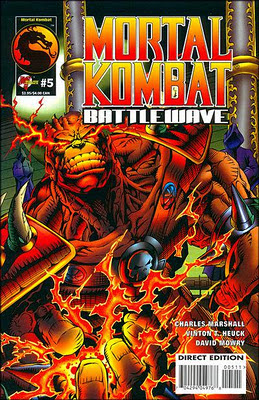Superhero Artist: He looks like a mild-mannered illustrator, but he takes on comic-book monsters and villains
Published by Indian Country Today in 2010. For more on topics like this, see my book, American Apartheid: The Native American Struggle...
Rolo enjoys working on a project that’s so positive. “It’s all about going in the right direction — parents reading books to young children, older children developing their reading skills, and everyone encouraged to live healthy lives.”
Throughout Indian country, people know of Patrick Rolo’s illustrations for the Eagle Books series from Centers for Disease Control and Prevention. The CDC has distributed some 2 million of the children’s books, which help Native kids prevent diabetes by means of proper nutrition, exercise, and traditional beliefs.
But Rolo, Bad River Band of Ojibway, wears other hats as well — including newspaper and magazine illustrator, painter and comic-book artist. He’s been a penciller (the person who draws the figures that’ll be colored in) for comics such as “Mortal Kombat,” “Iron Man” and, most recently, the “All-New Official Handbook of the Marvel Universe A-Z.”
Rolo’s first comic was “Nightmares on Elm Street” in 1991. The self-trained artist was 23 and had been submitting his work to comic-book editors and showing his portfolio at comic-book convention talent searches. “I’d been getting rejections for a year and a half, then this job came through. Looking back, I’d say my craft wasn’t really there yet, but I got the job on the strength of my storytelling ability.”
He worked on expanding his drawing skills and still does to this day. As a result, he can tackle any superhero that comes his way, along with jobs illustrating magazine and newspaper articles, sketching courtroom trials, and executing a set of large paintings for a casino restaurant. “To survive as an artist, you must be able to take on different types of work.”
In October, Rolo showed his creations at pop culture’s coolest annual convention: Comic-Con in New York City, which attracted close to 100,000 attendees — many costumed as Marvel and DC Comics superheroes, Manga figures, Star Wars characters, and more. Rolo was there to show the latest in Eagle Books offerings, along with his collaborators, including writer and public-health specialist Teresa Lofton, from Westat Atlanta, a CDC contractor (shown below with Rolo), and Lemyra DeBruyn, the deputy and field director
for the CDC’s Native Diabetes Wellness Program.
The cheery, vibrant Eagle Books started out as four volumes for young children, with little kids as the central figures. Georgia Perez, a former health worker at Nambe Pueblo, was their originator, and Lisa Fifield, Oneida Tribe of Wisconsin’s Black Bear Clan, was one of the illustrators (along with Rolo). Now Eagle Books have expanded into a brand, with an exhibition of the artwork that’s traveling nationwide, Native-science flashcards, DVDs and downloadable videos, curriculum guides, and more. Native communities have translated the materials into traditional languages, adding their own cultural concepts to the text and making the books part of language-preservation efforts.
“The federal government paid for this, so everything is in the public domain,” said Lofton. “Communities can use the materials as they see fit.”
At Comic-Con, the team introduced “Coyote and the Turtle’s Dream,” the first of a series for older children, Rolo said. “We took the little kids from the first four books and grew them up. Now they are 10 to 12 years old and appear in illustrated chapter books appropriate for that age. We have a spin-off graphic novel and a comic book — “Mammoth Boy” — in the works.”
The materials are based on reservation discussions in which elders and officials said, “We want to see ourselves in the books,” according to Lofton. As she and Rolo work, feedback from Native kids helps refine the concepts. Issues confronted by next chapter book’s heroine will include bullying, something children said they wanted help with.
It’s all about listening, Rolo and Lofton agreed. For example, “Mammoth Boy” was originally the fictional favorite comic of the young protagonists of “Coyote and the Turtle’s Dream.” When Lofton and Rolo confessed to children that it wasn’t a real comic, but rather something they made up as part of the plot, the kids were so disappointed, the creative team decided to make it real and added it to the list of upcoming publications.
Rolo enjoys working on a project that’s so positive. “It’s all about going in the right direction — parents reading books to young children, older children developing their reading skills, and everyone encouraged to live healthy lives.”
DeBruyn agreed. “I love the stories and the beautiful, colorful art. Using these wonderful media for meaningful health messages is a joy.”
Where does Rolo see himself years down the road? “Probably painting more. Someday, I’d like the luxury to just be an artist. Exactly what I’d paint I can’t say right now. It’s in the act of painting that you find your ideas. I’ll know when I get there.”
Text c. Stephanie Woodard; photo of Patrick Rolo and Teresa Lofton by Stephanie Woodard; Mortal Kombat cover courtesy of Patrick Rolo; Rolo's Eagle Books drawing courtesy CDC.
Text c. Stephanie Woodard; photo of Patrick Rolo and Teresa Lofton by Stephanie Woodard; Mortal Kombat cover courtesy of Patrick Rolo; Rolo's Eagle Books drawing courtesy CDC.




